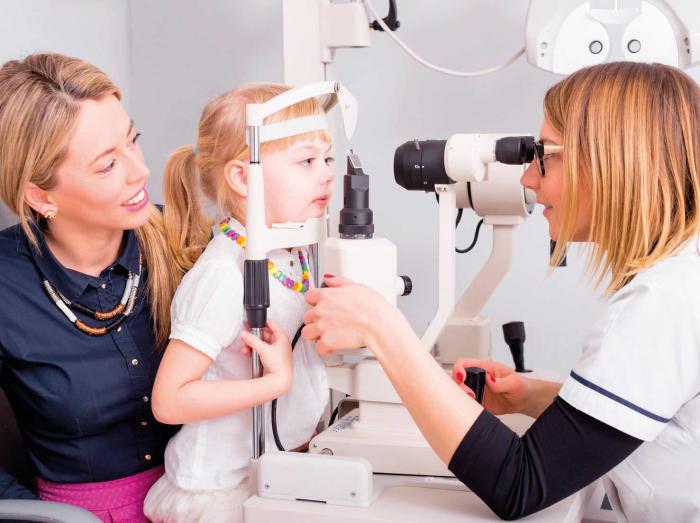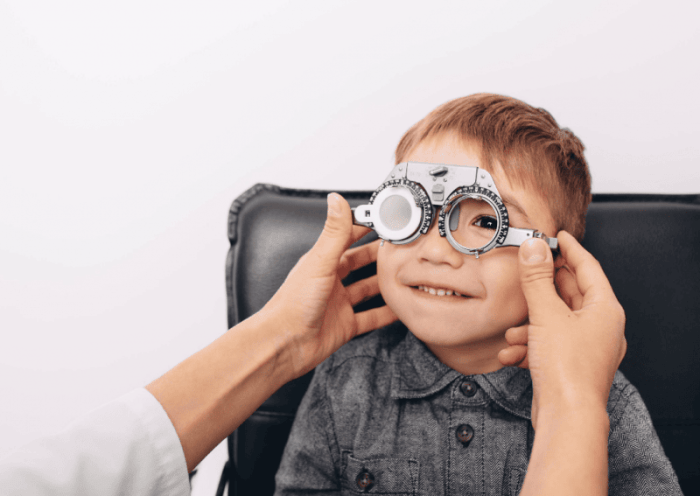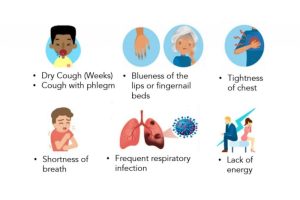
Embark on a journey exploring the crucial aspect of identifying vision issues in children at an early stage. From common problems to screening methods, this guide covers it all in a captivating manner.
Delve into the realm of children’s vision health and discover the key factors that contribute to optimal eye care.
Early Detection Methods for Vision Problems in Children
Vision problems in children can vary but some common issues that can be detected early include:
Myopia (nearsightedness)
Hyperopia (farsightedness)
Amblyopia (lazy eye)
Strabismus (crossed eyes)
Astigmatism
Early detection of these vision problems is crucial in preventing long-term issues that may affect a child’s development and academic performance. Untreated vision problems can lead to learning difficulties, social challenges, and even permanent vision loss.
Screening Methods
Healthcare professionals employ various screening methods to detect vision problems in children early on. Some common methods include:
- Visual Acuity Testing: This involves reading letters from a chart to assess sharpness of vision.
- Eye Movement Testing: Evaluating how well the eyes track moving objects.
- Refraction Testing: Determining the need for corrective lenses by measuring how light bends in the eye.
- Eye Health Examination: Checking the overall health of the eyes for any abnormalities or diseases.
Symptoms and Indicators of Vision Problems in Children
Recognizing the signs and symptoms of vision problems in children is crucial for early intervention and treatment. Parents and caregivers play a vital role in observing and identifying potential issues that may affect a child’s vision health.
Common Signs and Symptoms
- Squinting or closing one eye when looking at objects
- Frequent eye rubbing or blinking
- Complaints of headaches or eye strain
- Difficulty focusing on near or distant objects
- Excessive tearing or redness in the eyes
Observing and Recognizing Potential Vision Issues
Parents can pay attention to how their child behaves and interacts with the environment to identify possible vision problems. Observe if the child has trouble reading, watching TV, or recognizing familiar faces.
Significance of Regular Eye Exams
Scheduling regular eye exams for children is essential in monitoring their vision health and detecting any potential issues early on. Eye exams can help identify refractive errors, lazy eye, or other eye conditions that may impact a child’s visual development.
Impact of Untreated Vision Problems on Child Development

Untreated vision problems in children can have a significant impact on various aspects of their development, including learning abilities, social interactions, and overall academic performance.
Effect on Learning Abilities
- Children with untreated vision problems may struggle to read or comprehend information presented in class.
- Difficulty focusing on written materials or seeing the whiteboard can hinder their ability to follow along with lessons.
- This can lead to poor academic performance and a lack of interest in learning.
Impact on Social Interactions and Development
- Children with untreated vision issues may have trouble recognizing facial expressions or making eye contact.
- This can affect their social interactions with peers and teachers, leading to feelings of isolation or low self-esteem.
- Inability to participate in sports or activities that require good vision can also impact their overall development.
Correlation with Academic Performance
- Early detection and treatment of vision problems are crucial for ensuring optimal academic performance in children.
- Improved vision can lead to better concentration, comprehension, and overall engagement in the learning process.
- Children who undergo vision correction early on are more likely to excel academically and reach their full potential.
Importance of Child Health Check-ups

Regular health check-ups are crucial in monitoring children’s overall well-being as they provide an opportunity to detect any potential health issues early on. These routine visits not only help in preventing diseases but also in ensuring that children are developing properly.
Integration of Early Detection of Vision Problems
When it comes to children’s health, integrating the early detection of vision problems into routine pediatric visits is vital. By including vision screenings as part of regular check-ups, healthcare providers can identify any potential issues early on and provide appropriate interventions.
This proactive approach can help in preventing long-term vision problems and ensuring that children have the best possible outcomes.
- Parents play a crucial role in promoting child health awareness by scheduling regular check-ups for their children and being proactive in addressing any concerns related to their vision.
- Teachers can also contribute by observing children’s behavior in the classroom and notifying parents or healthcare providers if they notice any signs of vision problems.
- Healthcare providers are responsible for conducting thorough vision screenings during check-ups and educating parents about the importance of early detection and treatment of vision problems.
Last Recap
In conclusion, understanding the impact of early detection on a child’s well-being is paramount. By recognizing the signs and seeking timely interventions, we pave the way for a brighter future for our young ones.
Popular Questions
What are some common signs of vision problems in children?
Common signs include squinting, frequent eye rubbing, holding objects close to the face, and complaints of headaches or eye strain.
How can parents detect potential vision issues in children?
Parents can observe for signs like sitting too close to the TV, avoiding reading, or having difficulty concentrating on close-up tasks.
How do untreated vision problems impact a child’s learning abilities?
Untreated vision issues can lead to difficulties in reading, writing, and overall academic performance, affecting a child’s learning progress.
Why are regular eye exams important for monitoring children’s vision health?
Regular eye exams can help detect vision issues early, allowing for timely intervention and preventing potential long-term complications.
What role do parents play in promoting child health awareness?
Parents play a crucial role in advocating for regular check-ups, including eye exams, and ensuring overall well-being for their children.







